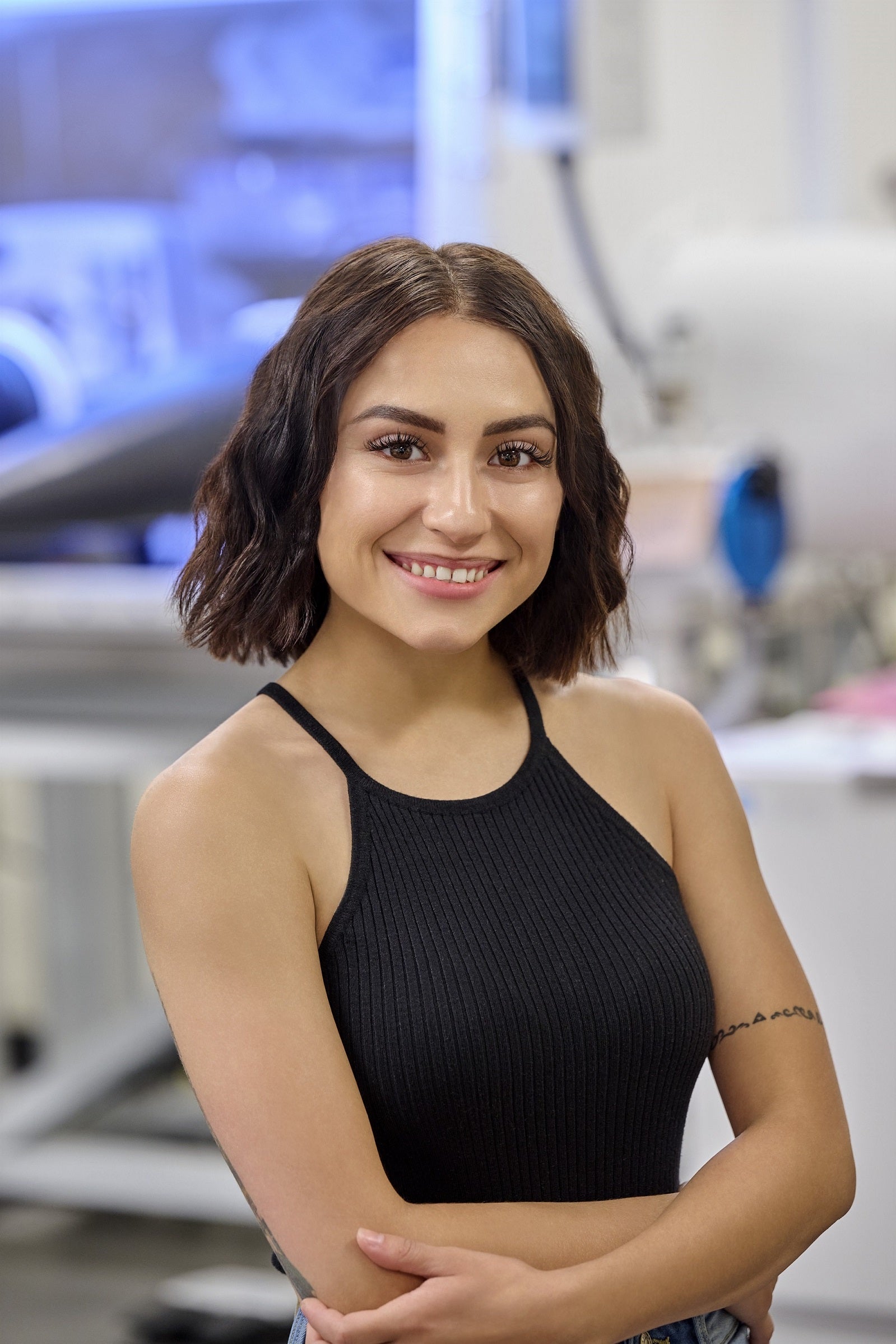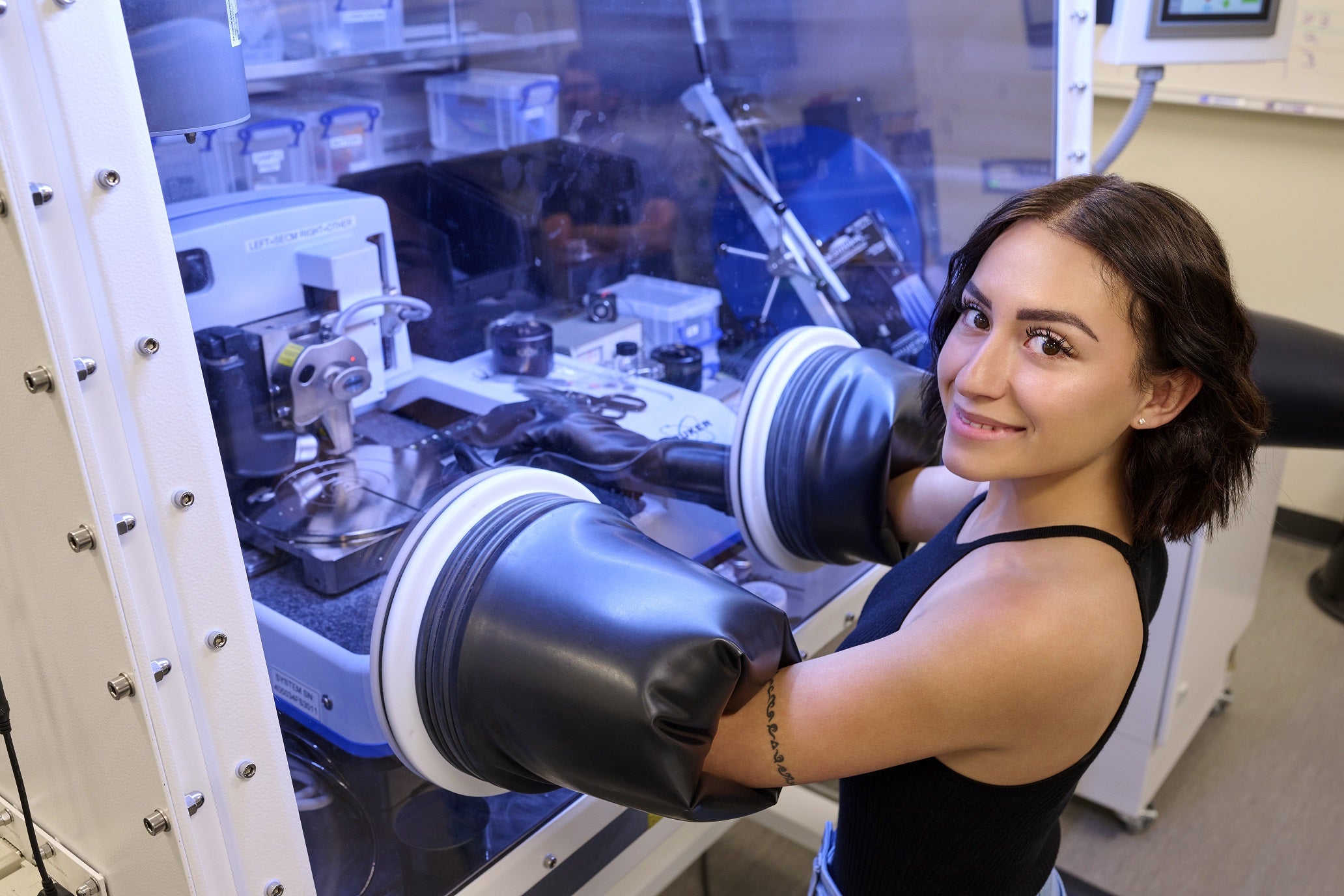
At 25, Alejandra (Ally) Almaraz has been working on her undergraduate degree, while also working for NASA, and doing research for Boise State, on top of her job that pays the bills.
“I love it. I love Boise State. I love my major. I love my research. It’s very stressful. I’m very busy and I’m always tired, but it’s going to be worth it when I’m done and I enjoy it,” she said.
After graduating from Caldwell High School in 2015, Ally took a gap year before starting at Carrington College where she got her certification in medical assisting. Two weeks later, she started classes at the College of Western Idaho. Three years later, she’d been working as a medical assistant and graduated with an associate degree in human biology, and her plan from there was to go to medical school. That fall, she started at Boise State to finish her bachelor’s degree and the pandemic hit. She thought that field might not be for her. But, her desire to contribute to science and research for the betterment and advancement of humankind stayed the same.
After speaking to some of her coworkers about her worries, several people told her to look into engineering. So, she did, was very interested by her classes, and changed her degree at Boise State to mechanical engineering. Turns out that wasn’t totally for her either, but it was a step closer. After taking her required materials science and engineering 101 class, she felt like it perfectly bridged the gap between microbiology and engineering. She had found what she wanted to do.
Since then, as a junior at Boise State, she’s switched to material science and engineering with a minor in biomedical engineering.
When it comes to science, “I think I just love the endless stream of possibilities,” Ally said. “When I’m in the research lab, I get to see things from a perspective that nobody sees.”
A professor noticed her interest in the field and recommended her to a lab at Boise State, the surface science lab using atomic force microscopy. Through that job, she got an internship with NASA and the Higher Education Research Council (HERC) fellowship, which uses the same work she’s doing in the lab and compiles it into research that she can report to each employer based on their ultimate goal.
She just completed the NASA Idaho Space Grant Consortium internship over the summer where she received a stipend to conduct research that would be of interest to NASA. She stayed in her current lab to do research where she looks at the surface of different materials at a nanoscopic level (50-100,000 times smaller than a single strand of hair). The tests she’s doing are of stem cells in fluid.

She compared her research to a record player, “You know when you put a record player down and it, like, goes over the lines to read the disc and play music? That’s essentially how you would describe atomic force microscopy. If you’re doing anything that is a hard surface, like any kind of metal or alloy or something that wouldn’t be damaged, you would use a regular pointed tip to tap or drag on the surface.”
She takes a picture of the surface of the material and measures the roughness, stiffness, and other mechanical properties. “I was working with stem cells in collaboration with one of our physics labs and we were looking at the stem cells of different mice that went under treatments — medical treatments, pharmaceutical treatments, or little vibrations to stimulate exercise with the goal of increasing the length of time that astronauts can go in outer space and be on space missions without losing too much of their bone density and muscle.”
Many astronauts experience bone and muscle degeneration while in space, and her job was to try and find breakthroughs in her research which could be used to prevent that.
“I have a spherical beaded tip that indents on the nuclei and I measure the stiffness of the nucleus and that tells us, ‘Okay, is this treatment working or not?’ I like it. You’re doing something that’s going to help a lot of people when you’re done. And if it was easy, someone would have already done it.”
This fall she’s going to continue her research with the HERC fellowship in collaboration with the corrosion lab to do atomic force microscopy, but instead with the goal of discovering or creating a metal alloy that can detect and prevent corrosion, which could also be super helpful for outer space travel.
When the idea of her research impacting humankind’s ability to explore was brought up she said, “I know! It gives me chills. I’m like, ‘Oh my gosh! I am contributing to changing the future for somebody.’ It’s so cool.”

When she thinks back on when the spark for science was ignited, she remembers growing up in Caldwell and being in middle school and already having an idea of what she wanted to do with her life. She was always really fascinated by medicine. She decided she would be a doctor.
After high school, she thought about starting her med school journey, but always with family in mind. Five brothers, two sisters, six nieces, and a nephew makes for a big family and it was important to her that her family grow up with her around. So, she made a plan: two years at a community college, two years at university, med school, and then residency.
Ally applied to Treasure Valley Community College right after high school, but after a snafu with her paperwork, she was told she couldn’t enroll until the spring. She saw the hiccup as an opportunity to wait for school and make sure she was getting herself into a program that she’d actually enjoy. So that “gap year” actually turned into a year of research and preparation.
She bought herself her first car, researched how to get experience in the medical field, became a medical assistant, did some more research on how she could pay for school, ended up enrolling at Carrington College, and drove herself there every day.
“My family is Hispanic. We are like a low-middle class family. My parents can’t help me pay for school or anything like that. I am the third oldest of my siblings and the only one to go to college, so I always have finances being very strongly considered in everything that I do. I did so much research. I thought I could become a medical assistant, get a job at St. Als. They will pay for my school with their programs while I pursue medicine and while I work — because I have to work. I have to pay for my car insurance, I have to pay for my phone bill, whatever it is, I need to make sure I have a job.”
Her plan panned out and she got a job at the hospital for a bit before finding another position at a different health care facility that fit her school schedule a bit better. From there, it was a toss-up between colleges that both had great medical degrees. Initially she thought she might go to Idaho State University. She had every class picked out from start to finish.
“I don’t even remember what made me choose Boise State instead of ISU (Idaho State University),” Ally laughed, “I have a cousin who went to Boise State. I think she got a chemistry degree. I got to talk to her and she’s a scientist and she just travels the world and I was like, ‘I’m going to do that’. The most fun I’ve had has been at Boise State. It’s definitely the best educational experience I’ve had so far.”
What’s next for Ally is presenting her research at multiple conferences, she hopes to publish on one or both of these research projects she’s getting to do, and she’s deciding if she’ll go to grad school for biomedical engineering or material science, “I am planning on going to graduate school and I’m pretty sure I’m going to get my PhD — I’m still thinking about it because I don’t know if I want to do another five years of school after I finish. I might just get my master’s, but I’m definitely going to pursue a graduate degree and I’m looking at schools out of state. I’m in the McNair Scholars Program and they want us to apply for at least eight.”
But she’s got time. She’s planned everything meticulously thus far. She’s got a year left of research, internships, and study. So, for now, she’s content to do her work and think of the stars.
Author
-

Trisha